How to Leverage Emotions In Marketing to Skyrocket Sales
Humans are emotional creatures.
We cry, we laugh, we scream, and we shout.
Inevitably, this has gotten lots of marketers to study humans and if it is possible to leverage emotions in marketing to leave a bigger impact and to ultimately get people to convert.
Hint: it is possible – and it’s happening all around you.
And you can probably recognize yourself in this.
The majority of the choices you make are made based on how you feel, not what you think.
In that sense, we’re irrational creatures, which makes that the main thing marketers have to appeal to is your emotions.
While we often want to think and believe that we’re in control of our choices, it’s seldom we actually are.
Instead of using your logical thinking and reasoning which we like to believe that we are when we make decisions, the real truth is that they’re more based on emotions than anything else.
In fact, 95% of cognition exists in the subconscious mind, therefore, emotions are the drivers of decision making.
With all of this in mind, it is true that the vast majority of choices us humans make are based on emotion. Not rational thinking and logical reasoning.
As a marketer, this is good news.
Why?
Because it means that you can by leveraging the power of emotions create messages that resonate with your target audience, which impacts their emotions greatly, leading to a decision – which in business is often a sale – a decision in the customer to purchase.
But simply knowing that emotions have a huge impact on how humans make decisions, and therefore also how we humans purchase things isn’t enough.
In order to be able to leverage this information in marketing to drive sales, we need to look at the methods and approaches we can take to play on your audience’s emotions.
What makes emotions in marketing effective?
By now, we know that the way to make an impact on people is to impact them emotionally – get them to feel something.
This is true not only in marketing but essentially also every single time you want to impact people and convey your point.
For now, though, we’ll focus on marketing.
To prove my point, let’s look at some viral advertising videos.
They all have one thing in common, apart from the fact that they are all huge successes.
https://www.youtube.com/watch?v=ruav0KvQOOg
But what made them such huge successes? Do you see the pattern?
They all play on emotions.
Not necessarily the same emotions, but some kind of emotion.
The result?
They impact us, humans, much more deeply than things that aren’t leveraging emotions.
This, in turn, leads to us taking action, for instance sharing the advertising video – which leads to it going viral.
But what it is that makes emotions in marketing so effective?
The simple answer is: connection.
When you impact your audience emotionally, you build an emotional bond with them, making it much easier to present them with things, because when you impact someone emotionally, more trust and loyalty is established in that person or brand, and the request that you have (for instance ”buy my book”), is taken a lot more seriously.
The main reason emotional marketing is effective is that it makes us humans make a decision in a matter of seconds. Instantly.
Logical decisions, however, takes more time, and a lot more consideration.
For instance, if I ask you to compare McDonald’s with Burger King, which do you choose?
Chances are, you have already made a decision on which is better, right?
But what do you base your decision on?
You based your instant answer on emotion.
Emotion-driven decisions are made instantly and done without any second thought. They’re done unconsciously.
These decisions are based on how you feel when you visit one or the other, as well as experiences you’ve had.
If you can recall having a bad experience on McDonald’s for instance, and at the same time recall a positive experience at Burger King, chances are, your emotions will say, Burger King.
But then, after you’ve made the emotional decision, your rational thinking and decision making will come in.
Now, you’ll make a more conscious decision, and base a decision on reason and logic.
This is often the way us humans make decisions.
First, we make an emotional decision right on the spot, based on how something makes us feel.
And then, we try to rationalize it with logical thinking.
Good marketers understand this and know how they can create messages that lead to their audience make more decisions based on emotions rather than logic, and ultimately get them to convert.
That’s why nearly a third of marketers report significant profit gains when running emotional campaigns, but the number of successful campaigns dips if you introduce logic into the marketing.
And those results get sliced in half when marketers switch to logic over emotion.
How to leverage emotions in marketing to drive more sales
Apart from what many people think, the only emotion you can use to drive better marketing results isn’t just happiness.
In fact, if used in the wrong way, all emotions can work.
We’re essentially only capable of four “basic” emotions: happy, sad, afraid/surprised, and angry/disgusted.
But being a little cautious with anger is my recommendation because there’s a great risk that that anger will be directed towards your brand instead.
These 4 emotions are then, in turn, the foundation to a ton of different emotions we can feel, seen in this “wheel of emotions” by Robert Plutchik’s, that shows the different layers of emotions.
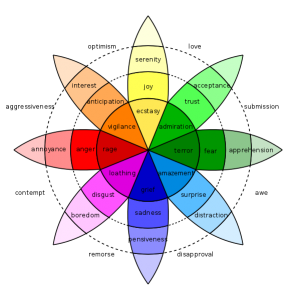
With all of this in mind, let’s look at the different ways we can leverage emotions in marketing to drive more sales (or get your audience to convert – whatever that means).
1. Belonging
The emotion of belonging is tremendously effective.
And if you think about it, it’s not that strange, really.
To survive back in the days, it was crucial that we humans belonged to a group of people – a clan.
If we didn’t, or if we’d be excluded from the group, we’d hardly survive on our own.
This is the reason to why the emotion of belonging is so effective because, at the same time, it plays on the emotion fear (which I’ll go more into detail further on).
You might not have thought about it, but often times, us humans make purchase decisions only to make sure we’re part of the clan, and to get a sense of belonging.
A great example of belonging in marketing and business is fashion trends.
One day, not a single person has that particular garment that is trending, but the next day, there’s not a single person that doesn’t have it.
And part of that is that people don’t want to be excluded from the group.
While I am aware that this isn’t the only factor that makes people buy something that is trending and cool, it’s hard to deny that it has an impact on it.
Humans have a great need to feel belonging in all different kinds of aspects – from work to family, to clothing, and if you can evoke this feeling of belonging in your audience with your business and marketing, you’ll be able to impact your audience on a much deeper level.
Not only does the sense of belonging stretch as far back to the time when we were nomads, but research has also found that it can be traced back to infancy, where skin-to-skin contact between babies and their parents result in a sense of belonging.
You’ll be surprised at how many of the products you buy today are based on the sense of belonging.
- Coca-Cola or Pepsi?
- Mac or PC
- iPhone or Android?
- Red Bull or Monster?
- Coffee or Tea?
While the latter aren’t brands themselves, the two different categories of all of the listed brands have created a sense of belonging with their audience, leading to them getting loyal customers.
Sure, factors like they brands have worked with brand loyalty etc plays a role, but it is still the sense of belonging that lays the foundation for a person that is one or another.
This is something you can leverage and ultimately drive great results from.
By creating a sense of belonging in your audience, you can satisfy your customer’s psychological needs, and as a result get more loyal customers – customers that convert – and stays.
2. Laughter and joy
Probably the most common emotion you’re seeing in marketing, but that is because it works.
While the two emotions are similar, they’re distinctly different.
Because laughter demands your audience to actually laugh, while joy is a feeling that is within them – and not only shows to the outside.
However, laughter tends to lead to joy.
But at the same time, everything that makes your audience feel joy doesn’t make them laugh.
Similar to belonging, laughter, and joy stretches far back to being born when babies respond to the smile of our parents with our own smile.
As a result, laughter and joy are emotions that are rooted deep inside of us since birth.
A study found that our desire for joy increases when it is shared with someone else, and this is good news for you as a brand.
Because by leveraging joy in your marketing, you can create a bigger sense of connection with your content between you and your audience.
As a result, this is what makes laughter and joy such an overrepresented emotion in viral content and successful ads.
Because the content that spreads joy creates an urge in us to share them with our friends.
And this is no assumptions or guesses.
This is cold hard facts.
In fact, a study byJonah Berger, found something very interesting when it came to New York Times’s around 7,000 articles.
His study found that the more positive the articles were, the bigger where the chances of them going viral.
In this advertisement, Kohls play on the motto ”give joy, get joy”, to emphasize the joy of giving.
This is especially relevant during the holiday times.
https://www.youtube.com/watch?v=54fu5HIjGhQ
3. Fear
This is my favorite emotion to play on in marketing.
But it’s not necessarily the fear you have in mind.
In fact, there are different types of fears you can leverage in marketing, and one type is the fear of missing out, also known as FOMO.
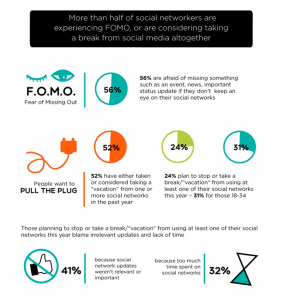
The Fear of missing out is something that most people have to some extent, and if you can learn to leverage it as a marketer, you’ll be able to see your sales increase.
I promise that you’ve come across a ton of different marketing campaigns that have leveraged the fear of missing out – whether you’re aware of it or not.
Another type of fear to leverage is the fear of being excluded from the group.
And there are several ways to do this.
My favorite approach to this is by leveraging social proof.
Why?
Because it combines social proof together with the emotion fear of being excluded from the group, as well as the fear of missing out on something extraordinary.
Something extraordinary that the social proof shows that other people are getting access to, I should add.
In one way, social proof is a form of fear-based marketing.
As you can expect from all of this, creating a marketing campaign that leans on all of these will be quite powerful.
One example is Social media examiner’s promotion for their social media marketing industry report.
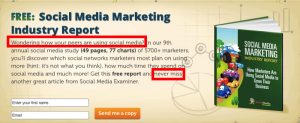
Fear is a powerful emotion that gets us to act quickly, without any second thought.
And once again, taking it back a few thousand years, having fear was necessary for human survival because if you stood face to face with a tiger, you didn’t have time to think rationally and be considerate in whether you should run or punch the lion in the face.
The good news is that being aware of all of this is a strong advantage as a marketer.
By leveraging it the right way, you can convince your audience to take action quickly and without hesitation.
A place where marketers and brands are losing customers is the part of the sales funnel where the customer is interested in your product but not really convinced to the point where they’re going to buy.
This is where fear comes in.
Fear of missing out in particular.
Fear causes us to act quickly without thinking and contemplating about it.
Because in reality, we don’t have any time for that.
If we want the deal, we have to act now.
And so a lot of people do because many people would rather waste money than withstand the feeling of having missed out on something.
Here is a prime example of leveraging the fear of missing out principle in marketing:

There are several ways to create a fear of missing out.
The one you probably know most well are the traditional ones:
- Don’t miss out
- Only X days left
- Buy before it’s too late
- Only 4 products left
And so on…
Doing this is a very transparent way of leveraging FOMO.
Another is to add a clock that counts down how much time there is left to do something.
4. Guilt
What if you can guilt someone into buying from you?
Turns out, you can.
In a number of ways actually.
A person that is especially fascinated by this method of marketing is entrepreneur Gary Vaynerchuk.
This is what he says:
His theory is based on the human psychology called reciprocity, which means that if a human is given something, they feel the urge to give something back in return.
The caveat, however, is that you should be giving without expecting.
Here’s an explanation of his strategy by compass offices on how you an guilt your audience into buying from them by providing them with so much value that they choke – and doing it without expecting anything in return.

The way you can guilt your audience by providing them value is by actually giving them value.
It might sound obvious, but I see this mistake being committed all the time.
Brands try to trick their audience that they’re actually giving them value, while the reality is that they are the ones that are gaining something from it.
For instance, let’s say that you’re a brand that sells football equipment, and all of a sudden, you decide to give away free basketballs if your audience orders something from your website.
Sure, you’re giving a product that has some sort of value, but you’re giving it to the wrong audience, an audience that won’t find much value in it.
As a result, they won’t feel very guilty, because they don’t feel like they’ve gained a lot from you.
Instead, they’ll feel like they’ve given something to you.
What you need to have in mind is that value is not just monetary value.
It is giving anything that your audience perceive as valuable.
It can be anything from information, education, tips, ideas, and a good laugh.
To measure value, you can follow this formula:
Customer Value = Perceived Benefit – Perceived Cost
As mentioned, there are other ways to leverage the emotion guilt in marketing.
One of them is guilting your audience because they’re doing something, and then offering to help them solve the problem – by showing them that your brand can help them.
For instance, if you’ve created a collection of clothes that are environmentally friendly and manufactured under fair circumstances, you can create a promotional advertising video where you show the horrible conditions that people who work for cheap clothing manufacturers work in, the negative effects cheap clothes have on the environment and so on, and in that way guilt the people who care for the environment and the global warming that what they are doing right now, buying clothes manufactured under unfair circumstances, and having a tremendously negative effect on the environment.
And then, you present them with your solution: environmentally friendly, and fairly produced clothing, that prevents them feeling guilty for leaving a negative impact on earth for buying clothes that harm both nature and people.
This video by Graeme Newell breaks down how different brands are leveraging guilt in marketing, and how you can too!
5. Leverage emotional (and powerful) words
The words you use in your copy are tremendously important in how you convey your point.
First off, you need to consider the difference between logical, rational decisions, and irrational and emotional decisions.
Since we’re focusing on appealing and impacting people emotionally in marketing, we’re looking at words that appeal to the emotions of the human.
It’s no news that you should be using powerful words in marketing.
But when you then mix powerful words, together with words that appeal to emotions, that’s when you’ll have an easy time getting your message across and getting it to impact your audience to the point where they decide to buy from you.
The words that are capable of transforming an absolute no into almost yes and a “perhaps” into “for sure”!, are the words that are called High Emotion Words.
When you’re trying to sell your audience a solution, what you’re really doing is trying to evoke a desire in them, by showing how your product can help them get the best possible future.
Here are some powerful words you can use in your marketing that gets your audience to take action NOW, created by the persuasion revolution.
- Magical
- Instantly
- Missing Out
- Left behind
- Magnificent
- Miracle
- Most Important
- Profitable
- Proven
- Quick
- Remarkable
- Results
- Revolutionary
- Safe
- Save
- Sensational
- Should
- Startling
- Strongly agree/ recommend
- Strongly suggest
- Superb
- Superior
- Tremendous
- Truly
- Trustworthy
- Urge
- Worthwhile
- Deadline
- Limited
- Seize
- bargain
- Discount
- Explode
- Extra
- Fortune
- Freebie
- Jackpot
- Reduced
- Instant Savings
- Skyrocket
- Immediately
- Imminently
When writing copy, you have to ask yourself what you want your copy do.
What do you want your audience to feel?
What action do you want them to take?
Based on this, your actions should reflect your goals.
Apart from using the emotionally powerful words in the list above, you want to think about the context.
How well does your content resonate with your copy, and how well does your choice of emotional and powerful words align with your objective?
6. Awe
Leveraging the emotion awe in your marketing can make a great impact on your audience.
Awe is an emotion that has shown to be able to get people focused on the present, and not be distracted by anything else.
For you as a marketer, this is good news, because you’re essentially trading on attention.
When you want to increase brand awareness, when you want to sell something, when you want to get people to back your project, it is all based on attention.
If you don’t have people’s attention, it will be impossible to impact them.
Or, as entrepreneur Gary Vaynerchuk puts it:
”the currency of business is attention”.
In fact, a study from Stanford University found that people who experienced the emotion awe became more focused on what was happening right in front of them – they became more alert and present.
As a marketer, you can understand how the emotion of awe is great in marketing, because it grabs your audience’s attention, and really gets them to listen.
Not just scroll past your social media post, not really consuming what it is you share.
And ultimately, by getting your audience’s attention, you’ll have a much easier time impacting them into a decision.
7. Trust
Trust is one of the foundation pillars of selling.
According to entrepreneur Jordan Belfort, there are three things you need to get the customer to trust before they will be willing to buy from you.
First, they have to buy your product, second, they have to trust you, and lastly, they have to trust the brand that stands behind the product that is being sold to them.
As a brand, trust is, therefore, foundational for success.
If your audience doesn’t trust you, they won’t buy from you.
Simple.
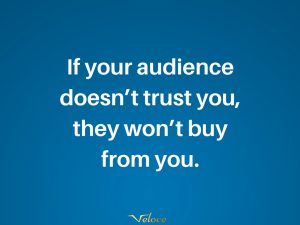
It’s important that you greatly emphasize trust in your marketing because what trust leads to is a more engaged and loyal audience.
And when you have that trust, it will be much easier to convince them to buy from you.
When they trust you, they’ll continuingly buy from you, without having to put a ton of effort into convincing them that they should.
8. Instant gratification
Humans are creatures of instant gratification.
In general, we prefer to receive a reward right now, on the spot, rather than wait for it.
The same goes for being a customer and buying things.
Customers are eager to buy things that catch their interest, but you might also recognize yourself in the fact that if you see that it will take a long time until you actually get your product, you might shy away from ordering something.
Ideally, when we buy something online, we want to have the product right in front of us the second we click ”order”, but obviously, that isn’t possible.
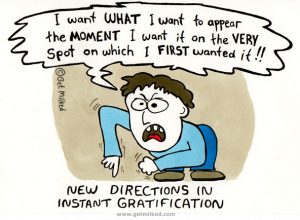
Let me ask you, would you want $50 now or $100 in a year?
Chances are, you’ll pick the 50 bucks.
But how can we leverage the immense power instant gratification has over our decisions, in marketing?
Well, first off, if we look all around us, we can see businesses that are all based on the principle of giving humans what they want and giving it to them now.
From on-demand video services like Netflix and Amazon Prime to music services such as Spotify and Soundcloud.
They’re all focused on giving us what we want now.
What if you’d have to first order the movie you want to see on Netflix, and then wait 24 hours?
Not a single soul would use the service.
Back in the days, we weren’t as desperate for instant gratification as we are today.
If you wanted to eat, you would have to wait a whole year for the crops to grow, if you wanted clothes, you’d have to spend the time sewing them.
If you wanted to communicate, you’d have to wait several weeks for a letter.
Today, we can get in touch with people in just a few milliseconds.
It is a completely different world we’re living in, to say the least.
In other words, the emotion, and psychological principle of instant gratification have never been as relevant and powerful in marketing as today.
But this also demands that you actually know how to leverage it.
The main key to leveraging instant gratification is by injecting urgency into your marketing.
Since people want things quickly, you can spark the emotion of instant gratification within them by incorporating urgency into your marketing.
A simple yet very effective way to do so is to leverage powerful instant gratification words.
Here are some words you can use:
- Now
- today
- instant access
- on the spot
- directly
The good news is that you can spark the emotion of instant gratification in your audience by advertising in a way that convinces people that they need your product.
Instant gratification when it comes to shopping doesn’t necessarily have to be that your customers need your product right here and right now – even if that is what they prefer.
Instead, the instant gratification you spark in them might just be that you create an urge for them to buy from you.
Realize that apart from the fact that humans make decisions based on emotions, we make decisions to gratify our needs and to get pleasure – to satisfy our wants and needs.
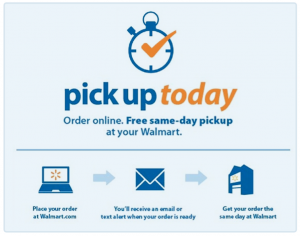
If you can create wants and needs, it won’t be very hard to get your audience to the tipping point where they eventually buy from you.
A way to leverage the principle of instant gratification is to
Give your customers something now, right on the spot.
For instance, if you want your customers to buy something from you, it means that they have to wait until they get it, assuming it is a physical product.
In that case, you might risk losing customers who don’t have the patience to wait.
But by giving them something right on the spot, you give them instant gratification directly, and thereby convince them to buy from you.
For instance, let’s say you are selling clothes online.
To satisfy your customer’s need for instant gratification, you can offer them something that they get access to instantly when they buy from you.
“The Future Belongs to Brands That Can Give Consumers Instant Gratification”
It can be something as simple as an inspiration catalog for how they create a flawless outfit with the garment they purchased.
This way, you satisfy their need for instant gratification, but at the same time increase anticipation and excitement, for the day they receive the products.
Another way that tons of brands are leveraging is customer loyalty programs. These give your customers instant gratification because you give them something – whether it be discounts, giveaway or chances to win.
9. Anger
Anger is an emotion that can be leveraged in marketing.
It can be highly effective, but it can also be very riskful.
Kind of like a double-edged sword.
It is when your customers feel anger towards you as a brand that it becomes dangerous.
But when you can spark anger in your audience in a way that doesn’t direct it towards you, you can generate amazing results.
In fact, anger in content is often associated with the virality of content.
Chances are, you’ve seen a lot of viral content that has leveraged the emotion anger.
This is because humans get fired up as a result of anger – and we’re more likely to perform actions when we feel that emotion.
In fact, a study of the New York Times content found that content which incites feelings of frustration or anger is 34% more likely to be featured on the Time’s most emailed list than the average article.
if you’re planning on using anger in your marketing, it is important that you are careful.
Note that there’s a great difference between triggering anger and creating controversy, and bringing up a topic that stirs up a lot of emotions.
If you’re just doing something to spark anger in your audience, you won’t succeed very well.
However, if you create a debate by sharing thought-provoking and engaging content around a topic that you know have a lot of split opinions, you’ll spark anger in a constructive way that gets your audience engaged.
Understand your audience
In order to fully be able to leverage the power of emotions in marketing, you need to understand your audience, what drives them, and what emotions impact them most.
And more importantly, what impacts their emotions.
For instance, certain people might cry by looking at cute videos of puppies, while others might just shrug their shoulder.s
There’s a difference between using emotions in your marketing to gain engagement and to drive sales.
For the videos that I presented earlier, the engagement was the most important part of going viral, and as a result, gaining tons of exposure of traction.
But then, in turn, that engagement can lead to sales.
By understanding what emotions engage your audience, you can impact them on a much deeper level, and ultimately get them to buy from you.
When crafting content and campaigns that are focused on emotions, it’s important that you don’t forget the other parts of successful campaigns.
Emotions alone won’t do much, but emotions in the right context, and together with high-quality content is what drives success.
It might not come as a surprise that among the top 10,000 most-shared articles on the web, the vast majority of them played on some kind of emotion.
But the emotion wasn’t the only thing that drove such huge engagement.
Another important part of the successful content was also the fact that the content was high-quality.
In other words:
Implementing emotions in your campaign won’t compensate for low-quality content.
To better understand what emotions trigger your audience, you want to get to know them better.
And you don’t want to be making any decisions based on assumptions.
Instead, you want to make decisions based on cold hard facts and data.
This is why audience research is important.
To understand your target audience better you want to break down your customer personas and ask the right questions in doing so.
- What makes them angry?
- What topics do they care deeply about?
- What makes them laugh
- What makes them cry?
- What kind of humor do they have?
- What are topics they often talk about?
… and so on.
Ultimately, the answers you get from your research should tell you what type of emotions will work best in your marketing, and also what type of content you should leverage to evoke those emotions.
But, of course, there’s nothing that speaks as clearly as actually trying.
Conclusion
Humans are emotional creatures.
For marketers, that’s a good thing, because knowing how to leverage that can help generate tremendous results.
Cutting through the noise in today’s crowded landscape is difficult, but if you can spark your audience’s attention by impacting them emotionally, you’ll win over your competitors.
If you can impact your audience emotionally with your marketing, you have the leverage over your competitors.


